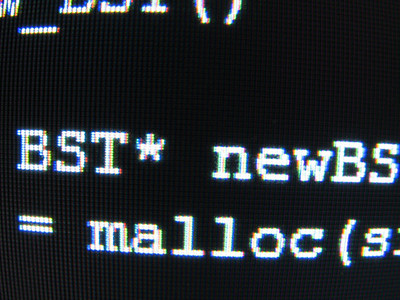Hackathons, and why your company needs one
I could wax lyrical about how programming is an art form and requires a great deal of creativity. However, it’s easy to loose focus on this in the middle of creating project specs and servicing your technical debt. Like many companies we recently held a hackathon event where we split up into teams and worked on projects suggested by the team members.
Different teams took different approaches to the challenge, one team set about integrating an open source code review site in our development environment, others investigated how some commercial technologies could be useful to us. My team built a collaborative filtering system using MongoDB. I’ll post about that project in the future, but in this post I wanted to focus on what we learnt about running a company Hackathon event.
If you’re lucky you’ll work in a company that’s focused on technology and you’ll always be creating new and interesting things. In the majority of companies technology is a means to a end, rather than the goal. In that case it’s easy to become so engrossed in the day to day work that you forget to innovate or to experiment with new technologies. A hackathon is a great way to take a step back and try something new for a few days.n Running a hackathon event should be divided into three stages, preparation, the event and the post event. Before the event you need to take some time to collect ideas and do some preliminary research. The event itself should be a whirlwind of pumping out code and building something exciting. Afterwards you need to take some time to demonstrate what you’ve built, and share what you’ve learnt.
Typical IT departments will been given a set of requirements and will need work out how to achieve them. What a hackathon event should allow is for the department to produce their own set of requirements, free from any external influences. In your day to day work what projects you actually tackle will be decided by a range of factors, but a hackathon is designed to let programmers take something where they’ve thought “we could do something interesting with that data” or “that technology might help us make things better” and run with it. The first stage is to collect all these ideas from the department and then to divide the team up into groups to tackle the most popular projects, perhaps with a voting staging to whittle the ideas down. To keep things fun and quick small teams are key here, any more than five people and you’ll start to get bogged down in process and design by committee.
Once you’ve got the projects and teams sorted you can prepare for the event. People who are working on each project need to think about what they want to have built by the end of event and should be dreaming up ways to tackle the problem. Coding before is banned, but things will go much quicker if you’ve come up with a plan to attack the problem.
For the event you need to remove as many distractions as possible. Certainly you need tell others in the company that you will not be available for a few days. Whether other possibilities such as not reading your email are doable depends on how often you need to deal with crises. Hopefully with no-one fiddling with your servers fewer things will go wrong than on an average day. Moving location, either to meeting rooms or to an external space are both good ways of getting space to focus on the work.
Once the time has expired you need to wrap the event up, and the key thing is to demonstrate what you’ve built to the rest of team. Not everyone in IT is happy with standing and presenting, but a few minutes to people they know well should not be a problem. It’s tempting to invite people from outside the department to the presentations, and before my first hackathon I was very keen on bringing management, who often won’t understand what IT do, into the meeting. Hopefully what is built will show how innovative and full of ideas programmers can be. In reality though the best you can really hope for is a set of tech demos that require quite a lot of understanding about the limitations inherent in building things quickly, which those outside IT will struggle to understand.
The presentations should focus on two things, a demonstration of what you’ve built and a discussion on the technology used and decisions made. The aim should be to excite the team about what you’ve built and to impart some of what you’ve learnt. A good way to spark a discussion is to talk about what problems you encountered. How long the presentations should be depends a lot on the complexity of the problems being tackled, but ten to twenty minutes per project is a good length of time.
In the longer term after the event you’ll need to decide which of the projects to keep, which to improve on or rewrite and which to abandon completely. In a more structured and prepared presentation showing the projects to management maybe a good idea. The presentations immediately following the hackathon are likely to be a fairly ramshackle affair and won’t make the most ‘professional’ impression.
Traditional ‘training’ session don’t work to well in IT, it’s a easier to learn by doing. Most people are also quite sceptical of ‘build a raft’ style team building exercises, compared to those hackathons are the perfect mix of learning and fun. They’re also a great way to work on the problems that you’ve wanted to solve for ages but have never found the time. Even if you don’t get anything you can use out of the event the process of getting there will be worthwhile. And who knows, you might build a million dollar product for your company.

Comments